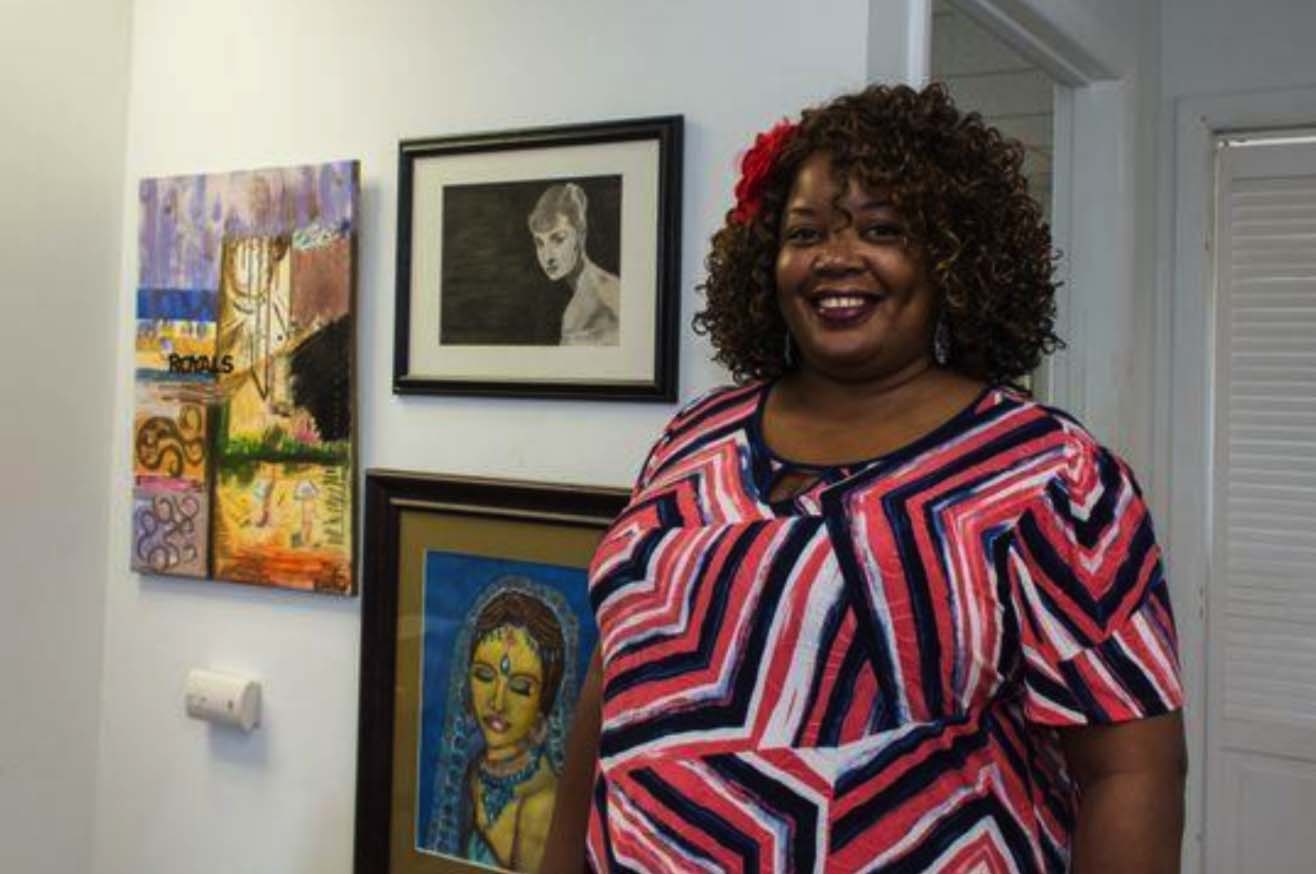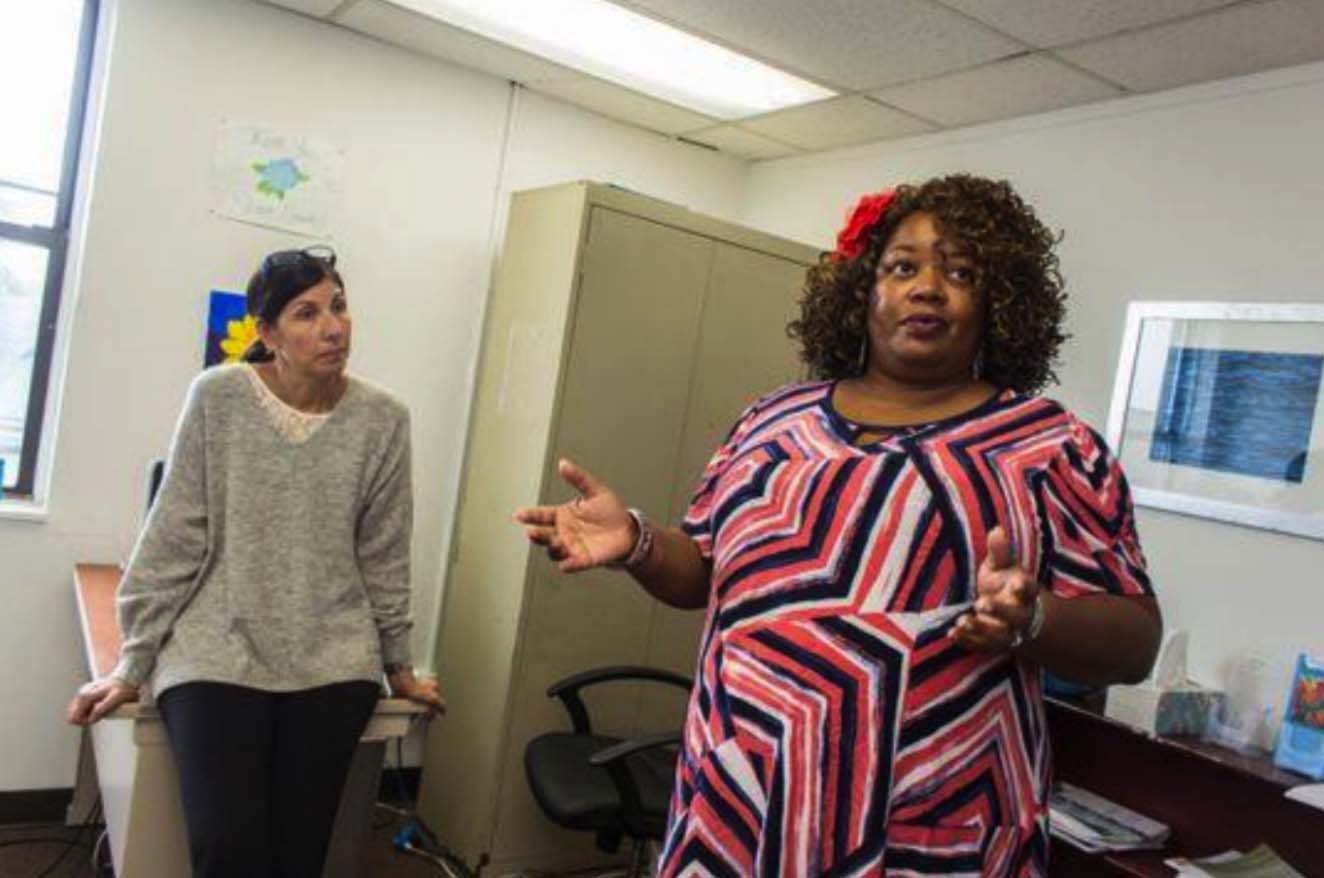Jerry Carino, Asbury Park Press
Once deeply depressed and alone, Keansburg’s Sherone Rogers has turned a corner thanks to a Long Branch nonprofit that empowers people through work.
 LONG BRANCH – Sherone Rogers first tried to take her own life at age 12. She survived, but never received long-term professional help.
LONG BRANCH – Sherone Rogers first tried to take her own life at age 12. She survived, but never received long-term professional help.
“My mother had the feeling that if you had problems, you could talk to your mother about them,” the Tinton Falls native said. Later, as a college student at Rutgers, she suffered a nervous breakdown.
“I went from straight-A’s to not being able to get out of bed and go to class,” Rogers recalled. “I just cried and slept and watched cartoons all the time. I was like, ‘What’s happening to me?’”

Sherone Rogers stands next to some of her artwork at Shore House in Long Branch. (Photo: EvaJo Alvarez)
Eventually, Rogers was diagnosed with bipolar depression as well as epilepsy. She spent years living with friends, chain smoking and passing in and out of mental-health clinics before connecting with Shore House in 2012.
“In these other groups I felt like I was treated like a child a lot of the time,” Rogers said.
“Here it’s not like that.”
Part of the international “clubhouse” movement, which employs those with mental illness as collegial partners rather than patients, Long Branch-based Shore House counts 180 members and has helped nearly two-thirds find outside employment after they worked in-house jobs first.
Membership is free and open to Monmouth County adults living with persistent mental illness.
“Work is restorative; that’s the belief,” executive director Susan Mazzeo said. “Members are not passive recipients in their recovery. They are active recipients.”

(L-R) Executive Director Susan Mazzeo and Shore House member Sherone Rogers discussing the mission of the Shore House. (Photo: (Contributor: EvaJo Alvarez))
Now 48 years old and living in Keansburg, Rogers holds a secretarial job, quit smoking and got married last year. Her progress exceeded her expectations.
“The support I got here, the feeling of accomplishment,” she said, “you learn to want more of that.”
National Mental Illness Awareness Week is Oct. 7-13, and this is one way to approach an issue society swept under the rug for generations.
“Everyone contributes something”
Shore House’s suite on the fourth floor of a Long Branch office building includes a gym, television studio and snack bar. Members share in the nonprofit’s work. Some cook lunch, some produce a newsletter and others handle social media or budgets. Everyone is charged with a task.
Rogers is an aspiring writer and talented painter. She writes for Shore House’s newsletter
and her artwork adorns the walls.
“Everyone contributes something, and you’re valued for doing that here,” she said.
“That’s one of the things that prepares you for going out to get a job — not being coddled, not being treated like you’re broken and people have to walk on eggshells around you. Because it’s not like that in the real world.”

Artwork by Sherone Rogers for a Shore House pamphlet. (Photo: EvaJo Alvarez)
In 2013, Rogers made a breakthrough: She represented Shore House at a mental-health seminar in St. Louis. It had been years since she traveled.
After that, she went on a job interview for the first time in a decade.
“I was so proud that she took that step,” Mazzeo said. “It’s scary, to have to explain gaps in your resume, but she did it.”
Rogers did not get the job but she gained something nearly as valuable — belief.
Overcoming the stigma
According to the National Alliance on Mental Illness, approximately 10 million American adults (or 1 in 25) experience persistent, life-impacting mental illness in a given year. Only about half, however, received mental-health services. A stigma persists.
“We’ve gotten better, but we’re not where I’d like to see our society,” Rogers said. “You still have a fear of telling people that you have mental illness. But the more people who push past that and admit, ‘I deal with this; I live with mental illness,’ the closer we are to having a society
that doesn’t keep people in the closet.”
Seeking help is crucial, and that means being honest about what’s wrong.
“We always liken this to a physical illness,” Mazzeo said. “You would never fight cancer on your own, so why would you fight mental illness on your own? Our understanding as a culture is not quite there yet.”
There was a time when Rogers came to Shore House every day. She drops in less frequently now. That’s the goal. Shore House is more a starting point than destination.
“With the confidence and social skills and support network here,” Rogers said, “I learned how to grow a support network outside of here.”
Shore House is not a clinical treatment program and non-residential. It is funded by grants and donations. A major fundraiser, “Rock the House” with singer-songwriter Bobby Bandiera, takes place takes place Nov. 18 at The Stone Pony in Asbury Park. For tickets, or more information on Shore House, visit www.shoreclubhouse.org or call 732-759-1595.
Staff writer Jerry Carino: jcarino@gannettnj.com



